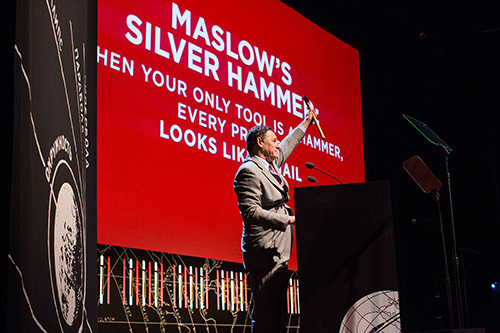
Honorees of the Tribeca Disruptive Innovation Awards receive a ball-pein hammer as their official award – nicknamed Maslow’s Silver Hammer in honor of psychologist Abe Maslow. The hammer embodies the spirit of an awards event that is fast becoming the place to meet and greet the world’s most creative and innovative entrepreneurs: celebrities from every business and intellectual domain that exists today.
After the fun and antics of the uber-creative awards ceremony at the Skirball Center for the Performing Arts in NYC, the disruptive learning begins in original breakout sessions that feature the honorees and other honored up-and-coming entrepreneurial talent. As I sit and listen to the perspectives of these fascinating panelists on real world challenges, it strikes me that their important lessons should be streamed into every career-related teacher-training program as well as student classrooms across the globe.

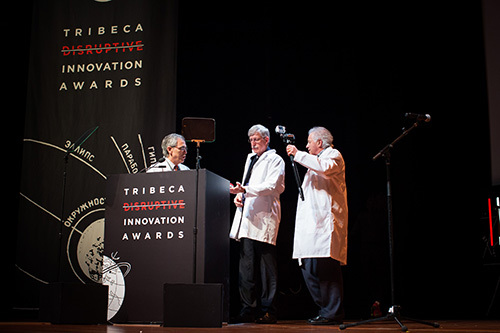
Okay – so I’m a Disruptive Fellow and maybe that means I’m biased, but I’ve also written over 200 articles on how to better prepare young people for higher education and the workforce by connecting them with creative and imaginative learning. A well-respected educator confessed to me last week, “Cathy, I think academics do a great job preparing students for careers in academia but I’m not sure we’ve figured out how to best prepare young people for the other career-related pathways.” Would that have anything to do with the jobs employers are currently offering but cannot find the talent to fill? So can I have a hammer?

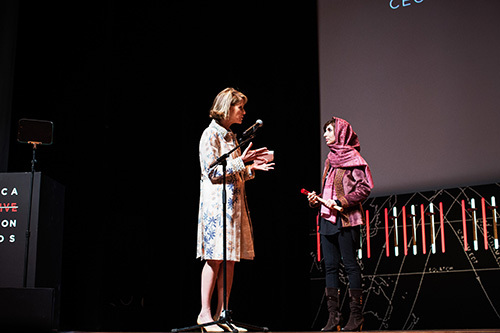
I predict an education entrepreneur will create a gold standard global career-related employers degree (CRED) with an innovative, always-evolving curriculum (accredited by both educators and the world’s great CEO’s). This will disrupt high school and college as we know it since the CRED will become as popular as (if not more so than) the traditional academic model that exists today. Not convinced? Google has indicated that GPA’s and test scores have become less and less the criteria for hiring, and already has teams of which 14 percent are young people who have never gone to college. And kids don’t want to work for companies like Google, right?
I also predict that teachers for the CRED will come from both worlds – the world of education and the world where learning is “in the doing”. Perhaps the teachers will be like my panelists today in The Global Search for Education – Dr. Francis Collins, Director of the National Institutes of Health (NIH) and a TDIA honoree; Jay Walker, founder of LabTV, creator of Priceline and a TDIA honoree; Anna Patterson, VP Engineering, Artifical Intelligence for Google and a TDIA panelist; Ruzwana Bahir, CEO and Founder of Peek and a TDIA panelist; and our always disruptive leader, Craig Hatkoff, co-founder of the Tribeca Disruptive Innovation awards.

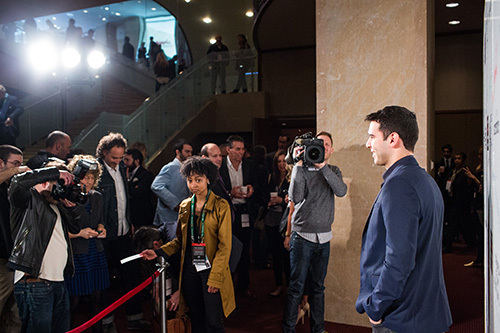
Ladies and Gentlemen – Would you please tell me about a significant challenge you faced in building your enterprise that would be educational to students trying to develop the skills needed to problem solve in your enterprise or in enterprises generally?
Francis Collins: One major challenge facing the National Institutes of Health (NIH) is how to enhance the diversity of the U.S. biomedical workforce – which falls woefully short of reflecting the diversity of the general population. This lack of diversity is damaging our ability to carry out research as innovatively and effectively as we would like. After taking a hard look at our shortcomings, which included evidence of unacceptable disparities in grant success rates between black and white researchers, NIH is moving forward to address this situation. Our actions range from mentoring efforts aimed at making a career in biomedical research appealing to youth who may lack role models in their own communities, to programs aimed at advancing the careers of talented scientists from under-represented minority groups. Recruiting and retaining the brightest minds regardless of race, ethnicity, gender, disability, and socioeconomic status is critically important not only to NIH, but to the entire U.S. scientific enterprise.
Jay Walker: Focusing on “problem definition” separates professionals from amateurs in entrepreneurship. Too many start-ups rush to design a product or service before they think through the exact nature of the problem they are trying to solve, and what customer they are trying to solve it for. A pro can define his or her idea for a new venture in a sentence or two that clearly and simply describes a problem, a customer, a solution and a price. For example, some while back we worked with Federal Express to help them move beyond Monday-through-Friday business document delivery to 364-days-a-year, consumer-facing, overnight package delivery. But “delivering packages overnight” isn’t a problem. The problem FedEx’s customers faced that we identified was surprising: at that time, Christmas catalog sales ended in mid-December to allow time for traditional shipping. By providing overnight package delivery through Christmas Eve, FedEx doubled the Christmas selling season for catalog merchants.
Ruzwana Bashir: There are a whole host of challenges associated with starting a new business. When I started working on Peek.com, I learned that the activities market is pretty fragmented, offline and massive ($100bn globally), but there was no fail-safe place for consumers to go to find activities and book them. By creating a business that was new and disruptive, I realized there were always going to be reasons why people were going to tell me the company would fail. So as an entrepreneur, I think it’s crucial to be persistent to overcome the inevitable obstacles you will face, and to be willing to work incredibly hard, since nothing that is worth doing is ever easy. You also have to be pretty strategic, so that you can take in new information quickly and be adaptable enough to act on it. Alongside this, it’s helpful to have great analytical skills, and to make sure you bring together a really talented team with varied skills that can complement your own.
Anna Patterson: I have been a dot-com entrepreneur, engineer and scientist. The foundation of my field usually starts with studying computer science. A lot of students ask me if they need to be “great at math” to succeed in STEM fields. The students are generally referring to having a talent with Calculus. Many STEM fields need Calculus, but many STEM fields don’t. If you were great at Geometry, but found Calculus tricky, most STEM fields are open to you. At Stanford, the introduction to computer science course has no math prerequisites. The skills to succeed are methodical thinking and the willingness to work. You need to create then fail, then debug.


Craig – Do you think we can teach kids to be more entrepreneurial?
Craig Hatkoff: Entrepreneurs live in a constant state of awe, wonder and enchantment (AWE). The most exciting word an entrepreneur can hear is “wow.”
I believe kids are born with the same burning passion for revelation and discovery as entrepreneurs. However, today most education is delivered in uninspiring packets by rote. Additionally, parents often inadvertently repress the natural inclination of a child to understand how the world works — a world of possibility where taking risk is rewarded and failure is accepted not punished. A world where “can’t” is a four letter word.
Eric Raymond, author of the The Cathedral and the Bazaar, writes, “If you want to solve an interesting problem, find a problem that interests you!” That is the root of the entrepreneurial spirit: to solve an interesting problem that manifests itself in a product, a service or just a damn good idea. Entrepreneurs are born not made. We need to let kids discover the problems they want to solve, like Steve Jobs, Jack Dorsey or 15-year-old Jack Andraka who created the pancreatic cancer testing strip.
For more information about the Tribeca Disruptive Innovation Awards: http://www.tribecadisruptiveinnovationawards.com/

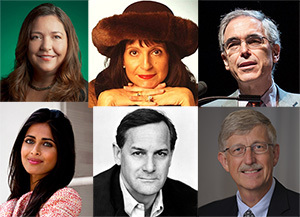
Bottom row, left to right: Ruzwana Bashir, Craig Hatkoff, Francis Collins
All photos are courtesy of the Tribeca Disruptive Innovation Awards
In The Global Search for Education, join me and globally renowned thought leaders including Sir Michael Barber (UK), Dr. Michael Block (U.S.), Dr. Leon Botstein (U.S.), Professor Clay Christensen (U.S.), Dr. Linda Darling-Hammond (U.S.), Dr. Madhav Chavan (India), Professor Michael Fullan (Canada), Professor Howard Gardner (U.S.), Professor Andy Hargreaves (U.S.), Professor Yvonne Hellman (The Netherlands), Professor Kristin Helstad (Norway), Jean Hendrickson (U.S.), Professor Rose Hipkins (New Zealand), Professor Cornelia Hoogland (Canada), Honourable Jeff Johnson (Canada), Mme. Chantal Kaufmann (Belgium), Dr. Eija Kauppinen (Finland), State Secretary Tapio Kosunen (Finland), Professor Dominique Lafontaine (Belgium), Professor Hugh Lauder (UK), Professor Ben Levin (Canada), Lord Ken Macdonald (UK), Professor Barry McGaw (Australia), Shiv Nadar (India), Professor R. Natarajan (India), Dr. Pak Tee Ng (Singapore), Dr. Denise Pope (US), Sridhar Rajagopalan (India), Dr. Diane Ravitch (U.S.), Richard Wilson Riley (U.S.), Sir Ken Robinson (UK), Professor Pasi Sahlberg (Finland), Professor Manabu Sato (Japan), Andreas Schleicher (PISA, OECD), Dr. Anthony Seldon (UK), Dr. David Shaffer (U.S.), Dr. Kirsten Sivesind (Norway), Chancellor Stephen Spahn (U.S.), Yves Theze (Lycee Francais U.S.), Professor Charles Ungerleider (Canada), Professor Tony Wagner (U.S.), Sir David Watson (UK), Professor Dylan Wiliam (UK), Dr. Mark Wormald (UK), Professor Theo Wubbels (The Netherlands), Professor Michael Young (UK), and Professor Minxuan Zhang (China) as they explore the big picture education questions that all nations face today.
The Global Search for Education Community Page
C. M. Rubin is the author of two widely read online series for which she received a 2011 Upton Sinclair award, “The Global Search for Education” and “How Will We Read?” She is also the author of three bestselling books, including The Real Alice in Wonderland, is the publisher of CMRubinWorld, and is a Disruptor Foundation Fellow.
Follow C. M. Rubin on Twitter: www.twitter.com/@cmrubinworld




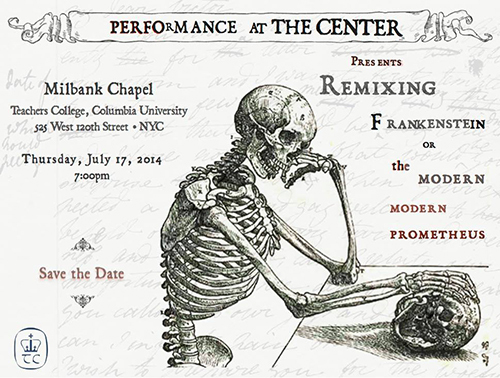
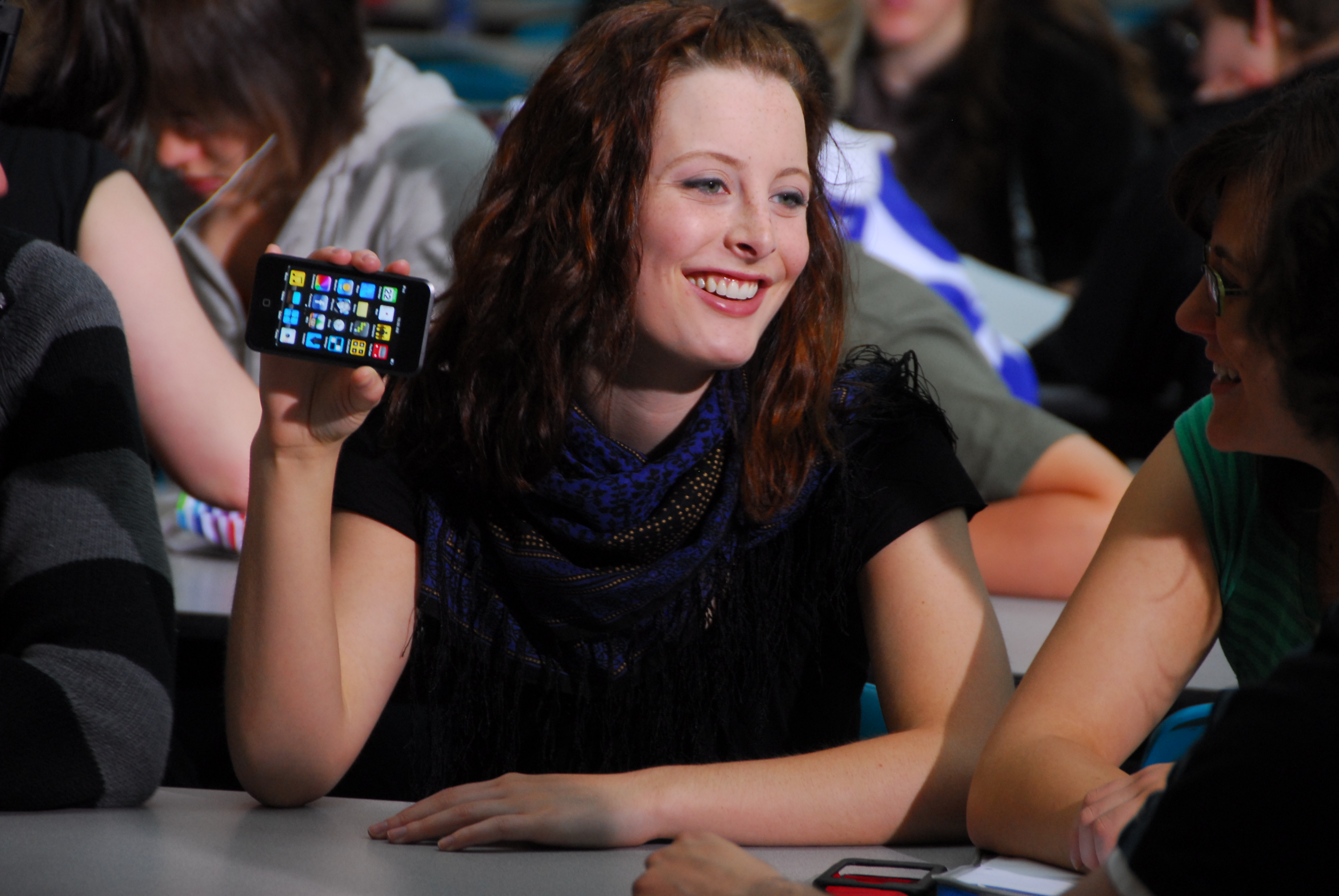
Recent Comments